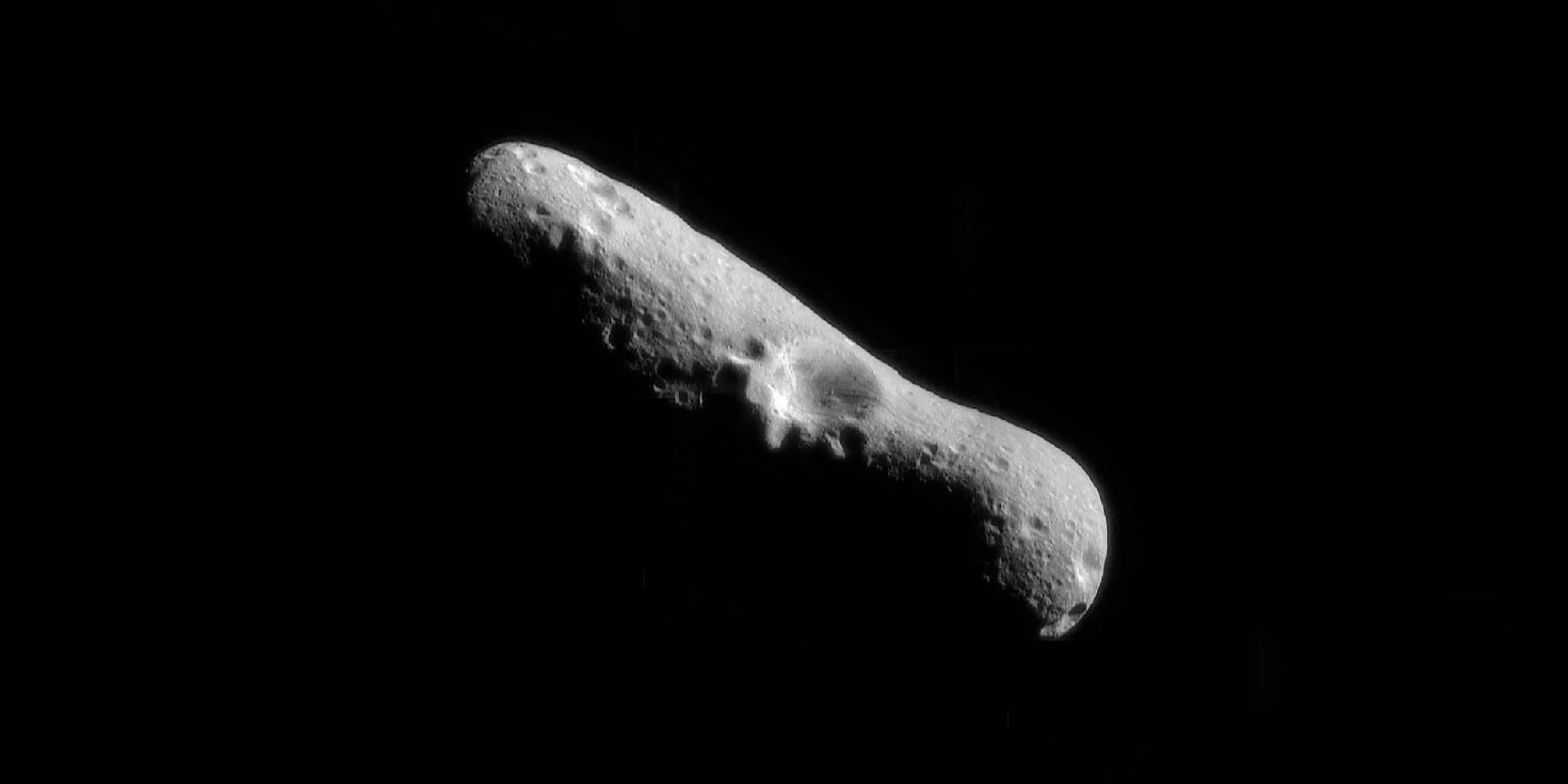Originally published 17 October 2000
Antoine de Saint-Exupéry’s “Little Prince” lived on an asteroid scarcely larger than himself. As readers of the childhood classic will remember, his companions were a sheep and a rose, and some baobab seedlings that he carefully weeded, lest they grow into giant trees that would split his tiny world. The asteroid had three volcanoes, two of which were active, and all of which the Little Prince assiduously cleaned.
A charming little world, but of course scientifically implausible. An asteroid the size of the Little Prince’s would not have enough internal heat to cause volcanic activity, nor enough gravity to hold an atmosphere. Water too would be absent, and surface temperatures would be either too hot or too cold for comfort.
For his journey to Earth, the Little Prince took advantage of the migration of a flock of wild birds, to which he attached himself with cords. On a world as small as his, birds might well provide enough propulsive power to effect an escape — if only there were air in space in which to fly.
Where children fly in their imaginations, NASA takes us in reality. On Feb. 17, 1996, the NEAR, or Near Earth Asteroid Rendezvous spacecraft was launched on a four-year voyage to the asteroid, Eros. Not a flock of wild birds but a Delta rocket with nine strap-on boosters lifted the car-sized craft away from Earth and sent it on its way.
Eros is not so far away. It doesn’t circle in the asteroid belt between Mars and Jupiter, but on an eccentric orbit that takes it nearly as close to the sun as Earth, and out just past Mars. Eros was the first near-Earth asteroid to be discovered, and the second biggest. It is a potato-shaped chunk of rock about the size of Martha’s Vineyard. Not as small as The Little Prince’s world, but small enough to circumnavigate in a brisk day’s walk.
NEAR’s voyage to Eros took four years. A three-year journey was planned, but the first attempt to put the spacecraft into orbit around the asteroid failed. An extra year’s travel gave engineers time to trim their skills and calculations. And it allowed NEAR to rendezvous with an asteroid named for the god of love on Valentine’s Day 2000.
An object as small as Eros doesn’t have much gravity to hold a spacecraft in orbit. The Little Prince would weigh about an ounce on Eros, and he could launch a stone into space with a swing of his arm. NEAR is bound to Eros by a slender gravitational thread, and slipping the spacecraft into the thrall of the asteroid was a tour de force of remote navigation.
Since April, NEAR has been orbiting just above the lumpy surface of Eros, sending back stunning pictures of a gray and lifeless world without air or water. No sheep or baobabs, but lots of impact craters and scattered boulders. We are catching a glimpse into the early history of the solar system, when scattered dust and gas was gathered into larger and larger chunks of rock, some of which would eventually coalesce to form the planets, and others that were destined to drift through space like gloomy Flying Dutchmans.
That’s exactly the impression one gets from the NEAR photos of Eros. It’s as if a manned boat had pulled aside the spectral galleon of seafaring myth, hailing without answer for a human response. The lifeless asteroid sails on in dusty solitude, grimly colorless and deathly silent, reminding us of just how extraordinary and rare is life in the universe.
A recent issue of the journal Science brought us the first summary reports from NEAR. We have the mass, shape, rotation rate, elemental composition, and even something of the asteroid’s internal structure. The potato-shaped rock named after the god of love is no longer just a speck of light in a telescope; it is now a world as exactly accessible to our imaginations as the Little Prince’s domicile.
Astronomer’s have charted about 250 near-Earth asteroids, and there may be as many as 1,000 with a diameter of a half-mile or more. A few of these are probably destined to collide with Earth at some time in the future, as other asteroids have done in the past. If something like Eros came smashing our way, we would be in big, big trouble indeed. Fortunately, Eros is on an orbit that will keep it safely out of the way.
But NASA scientists plan to get our licks in first, anyway. Next year, two days before the first anniversary of the Valentine’s Day rendezvous, NEAR will be caused to collide with Eros while the scientists listen — one last attempt to extract information from an asteroid that has been clobbered enough in its long history to withstand a gentle assault from Earth.



